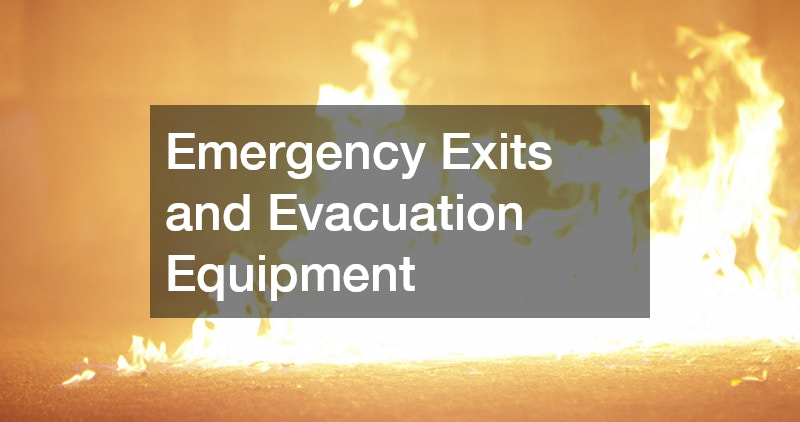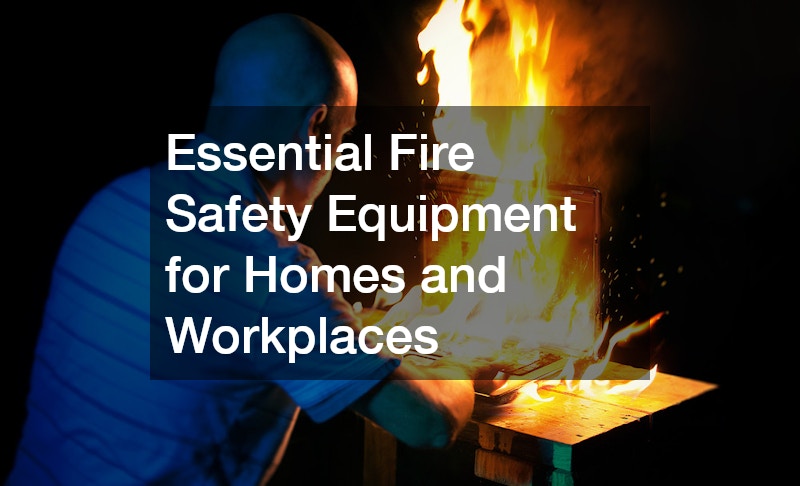
Fire safety is a critical aspect of protecting both lives and property. In homes, offices, and industrial settings, the presence of the right fire safety equipment can mean the difference between a minor incident and a major disaster. While fire prevention through safe practices is important, having the correct tools and equipment ready in case of an emergency ensures a faster, more effective response.
Understanding Fire Safety Equipment
Fire safety equipment encompasses a range of tools and devices designed to detect, prevent, and control fires. It is essential not only for emergency preparedness but also for compliance with safety regulations.
From smoke detectors to fire extinguishers, each type of equipment plays a unique role in mitigating risks associated with fires.
Smoke Detectors and Fire Alarms
Smoke detectors are often the first line of defense against fires. These devices are designed to sense smoke and alert occupants with a loud alarm, providing crucial early warning. Installing smoke detectors on every level of a building, including inside bedrooms and near kitchens, can drastically reduce response times. Modern fire alarms often integrate with home security systems or smart devices, allowing for notifications even when occupants are away from the premises.
Fire Extinguishers
Fire extinguishers are portable devices that can suppress or extinguish small fires before they spread. They come in different types, each suited for specific fire classes such as wood, paper, flammable liquids, or electrical fires. Proper training on how to operate a fire extinguisher is essential, as using one incorrectly can be dangerous. Regular inspection and maintenance are also critical to ensure they remain in working order.
Fire Sprinkler Systems
Sprinkler systems provide automatic fire suppression and are commonly found in commercial buildings, schools, and high-rise residences. When activated by heat, these systems release water or other fire-retardant chemicals to control or extinguish flames. Fire sprinkler systems are highly effective at minimizing damage and providing additional time for evacuation. Regular testing and inspection ensure these systems function properly when needed.
Fire Blankets
A fire blanket is a simple yet effective piece of fire safety equipment. Made from fire-resistant materials, it can smother small fires or be used to wrap around a person whose clothing has caught fire. Fire blankets are particularly useful in kitchens, laboratories, and areas where flammable liquids are present. They require minimal training to use, making them accessible for homes and workplaces alike.
Emergency Exits and Evacuation Equipment
Properly marked emergency exits and clear evacuation routes are a critical part of fire safety. Exit signs, emergency lighting, and evacuation maps ensure occupants can leave a building quickly and safely. In multi-story buildings, ladders or escape chutes may be installed to provide additional options for escape. Fire safety drills complement this equipment, helping occupants understand the fastest and safest routes during a real emergency.
Personal Protective Equipment (PPE)
In workplaces prone to fire hazards, personal protective equipment such as flame-resistant clothing, gloves, and helmets can protect individuals from burns and smoke inhalation. PPE is an essential complement to other fire safety equipment, particularly for firefighters, laboratory personnel, and industrial workers who face higher risks.
Fire Detection and Monitoring Systems
Advanced fire detection systems can monitor temperature, smoke levels, and the presence of hazardous gases. These systems often link to a central control panel or alert emergency services automatically. By providing real-time monitoring, these systems enhance safety in both residential and commercial settings, allowing for a rapid response even before a fire spreads.
Maintenance and Training
Having fire safety equipment is only effective if it is properly maintained and accompanied by adequate training. Smoke detectors need regular battery replacement, fire extinguishers require inspections, and sprinkler systems must be tested for functionality. Additionally, all building occupants should be trained on how to use fire safety equipment correctly and understand emergency procedures. Routine fire drills and refresher courses reinforce knowledge and ensure preparedness.
Investing in fire safety equipment is a vital step toward safeguarding lives and property. From smoke detectors and fire alarms to fire blankets, extinguishers, and protective gear, each tool plays a critical role in preventing and controlling fires. Regular maintenance, proper installation, and comprehensive training maximize the effectiveness of these devices. By prioritizing fire safety equipment and preparedness, homes and workplaces can reduce risks, ensure compliance with safety standards, and create an environment where occupants feel secure knowing they are ready to respond to emergencies.




